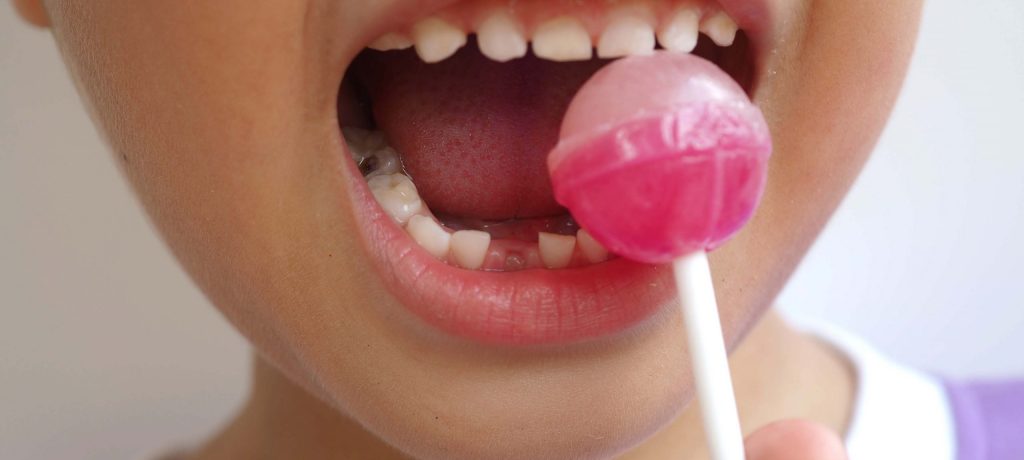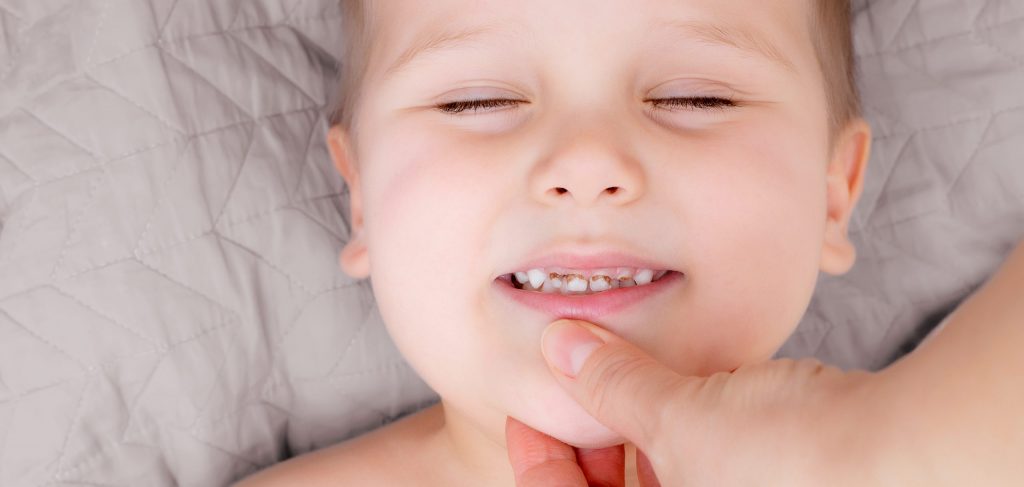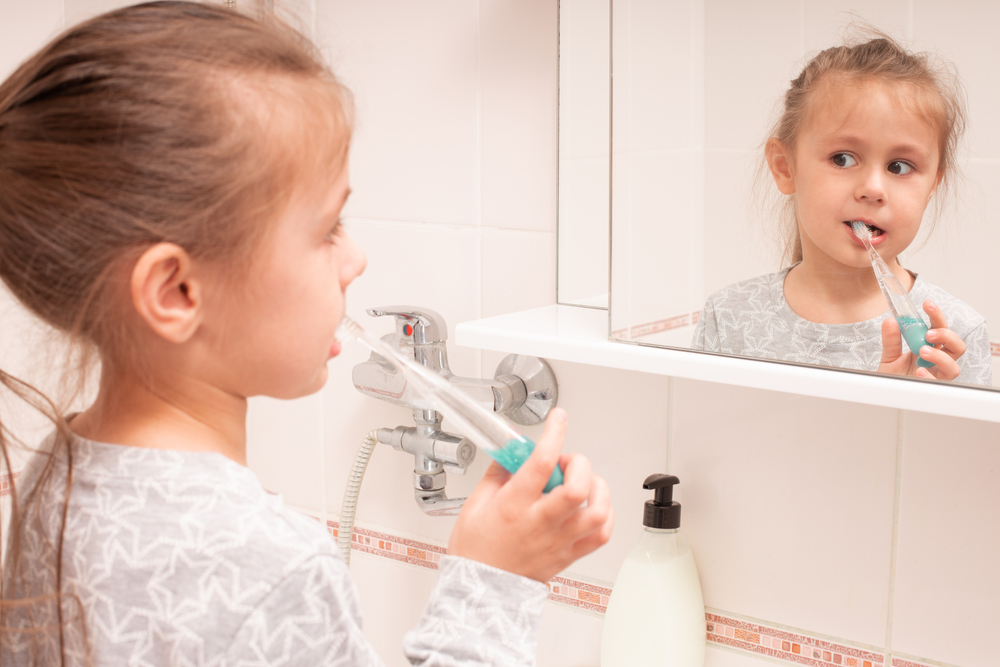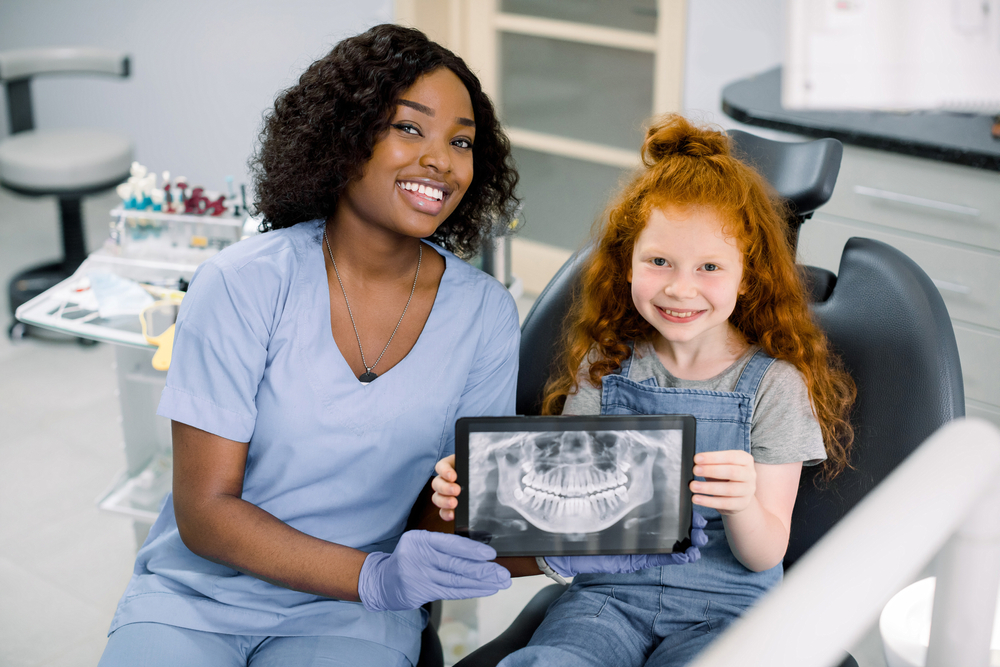Resource Library
Start Reading

Tooth decay is childhood’s most common chronic infectious disease in the United States.
More than half of six- to eight-year-olds have had a cavity in at least one primary (“baby”) tooth. More than half of adolescents (ages 12-19) have had one in at least one permanent tooth.
Plenty of American parents, guardians, and caregivers are asking, “Why are my kids’ teeth rotten—and what can I do about it?”
At Penn Dental Family Practice (PDFP), we have answers. The following will guide you if you’ve ever asked, “Why are my child’s teeth decaying?”
The same factors that cause tooth decay in adults can cause a child’s rotten teeth. The main culprits are too much sugar and starch in the diet, and poor oral hygiene.

Bacteria in the mouth mingle with carbohydrates in foods, especially starchy and sugary foods, to form plaque, a sticky film that covers teeth. When plaque isn’t removed through brushing and flossing, it demineralizes tooth enamel, leaving the tooth’s inner layers vulnerable to decay.
Overall, U.S. diets include too many processed starches and added sugars. American children’s diets are no different.
Sweetened drinks (soft drinks, fruit juices, fruit drinks, and sports and energy drinks), sweet baked goods, candy, and ready-to-eat cereals are among the major sources of added sugars in American children’s diets.
Though starchy foods (white rice, white bread, pasta, chips, crackers, and more) may not taste sweet, bacteria in the mouth breaks the rapidly digestible starches in these foods and snacks into sugar. Research shows the association of rapidly digestible starch intake and increased risk of tooth decay.
Proper hygiene can mitigate sugars and starches’ threat to oral health. But the oral hygiene of America’s children isn’t what it should be, either. One study found “nearly 80% of children aged 3–15 years started brushing later than recommended.”
Some adults assume a child’s baby teeth don’t need as much attention as permanent ones. But tooth decay in toddlers is a serious problem, and can contribute to rotten teeth in kids as they age.

Baby teeth have thinner, softer enamel than do permanent teeth. Consequently, cavity-causing bacteria meet with less resistance.
Adult caregivers who’d never dream of harming infants and toddlers nevertheless fall into habits that put children’s baby teeth at risk of decay.
They may rely on bottles or training (“sippy”) cups filled with drinks other than water as pacifiers, or put children to bed with drinks. Both practices prolong sugars’ contact with teeth—whether added sugars, or the natural ones found in breast milk, cow’s milk, or juice.
Adults may start serving juice too early. Children shouldn’t be drinking 100% fruit juice before their first birthday, and should have limited daily intake throughout childhood.
And they may not limit how many sweet and sticky foods and snacks a child eats. As discussed, such foods directly contribute to tooth decay in children.
What are the symptoms of baby tooth decay? It may first manifest as difficult-to-see white spots or a dull white band at the gum line. Eventually, kids’ teeth may appear black or brown. Gums may swell. And toddler tooth decay can cause sensitivity and pain, as decay does in older children and adults.
Preventing tooth decay in children starts at home. Focus on these dental hygiene fundamentals:

Clean your infant’s teeth by gently using a washcloth or finger toothbrush.
To fight tooth decay in toddlers, make brushing interesting and fun. Let them pick an age-appropriate toothbrush they like. Brush your teeth while your toddler brushes theirs, modeling good time (two minutes) and technique (soft, circular strokes, with bristles angled toward the gum line).
While children’s teeth benefit from fluoride as adults’ do, too much can cause a harmless, cosmetic condition known as dental fluorosis or “mottled teeth” before age eight, when permanent teeth are forming below the gums. Use only a smear of toothpaste the size of a grain of rice before age three. Use a pea-sized amount from ages three to eight.
Cut down on those sugary and starchy foods discussed earlier. Keep sweet treats to a minimum. Healthy eating benefits both oral and overall health.
Children should visit a dentist by their first birthday, with checkups every six months thereafter. Getting your child into the rhythm of routine dental care is the best way to help them stay in that rhythm once they’re grown.
Which dental professionals should you trust to make your kids’ rotten teeth whole and healthy again?
PDFP’s pediatric specialists offer gentle, child-friendly care. We have extensive experience with young patients. We also provide our expert, high-quality care to toddlers, older children, teens, and children with disabilities.
Would you like to know more about how PDFP compares to other Philadelphia-area dental practices? Download our free comparison chart today.
To make an appointment, use our online form or call us at 215-898-PDFP (7337).